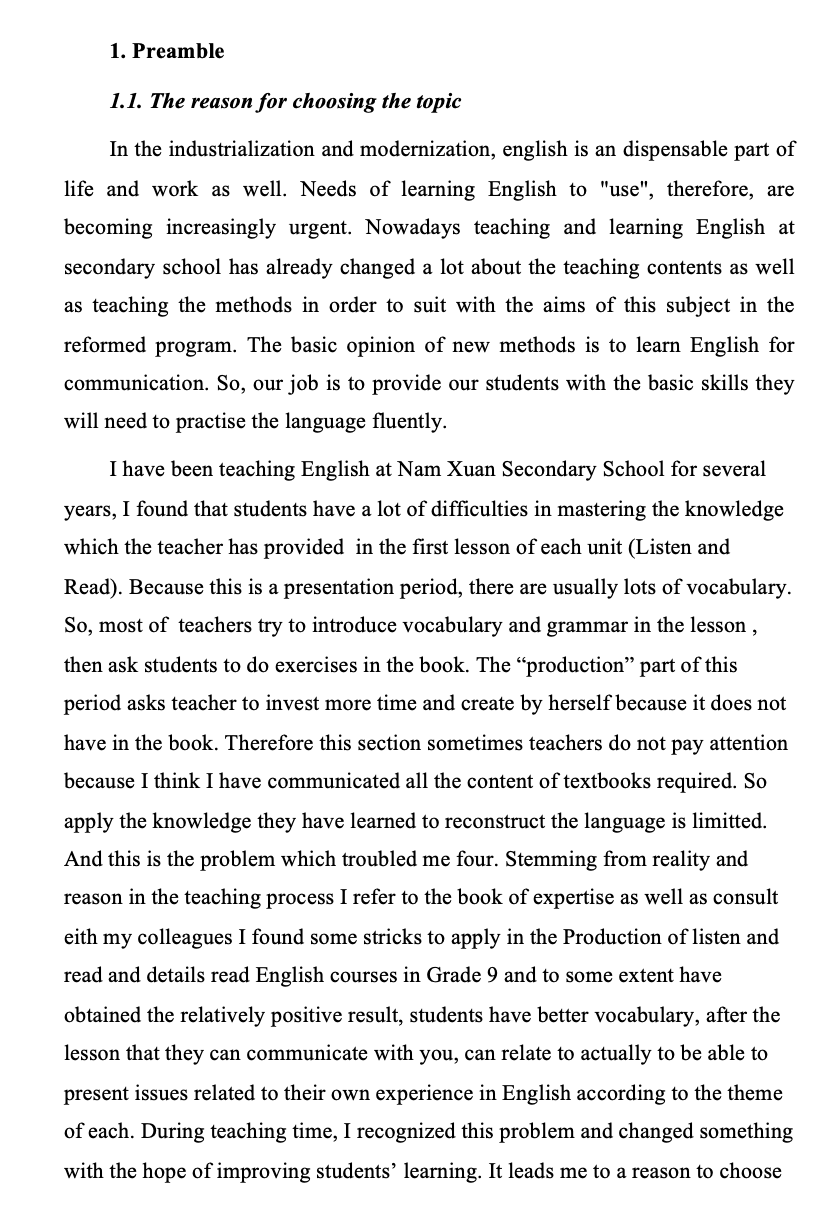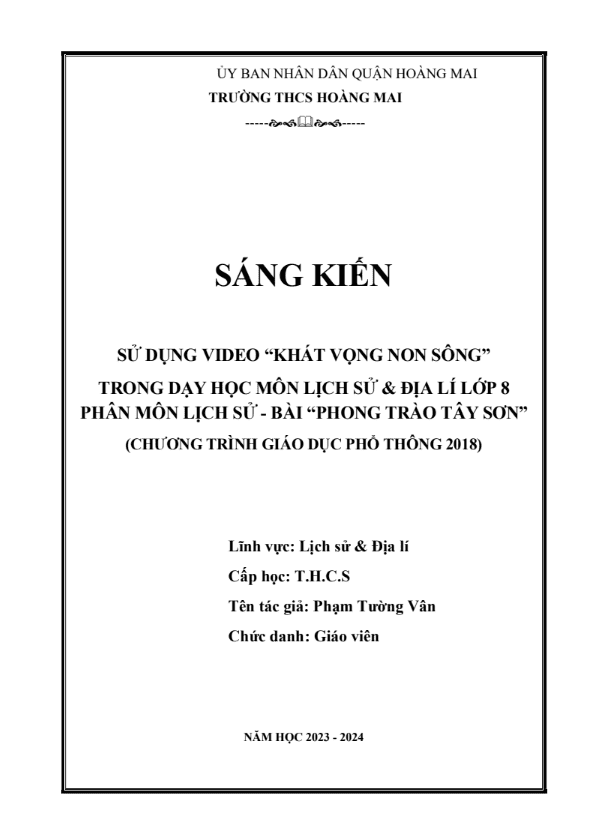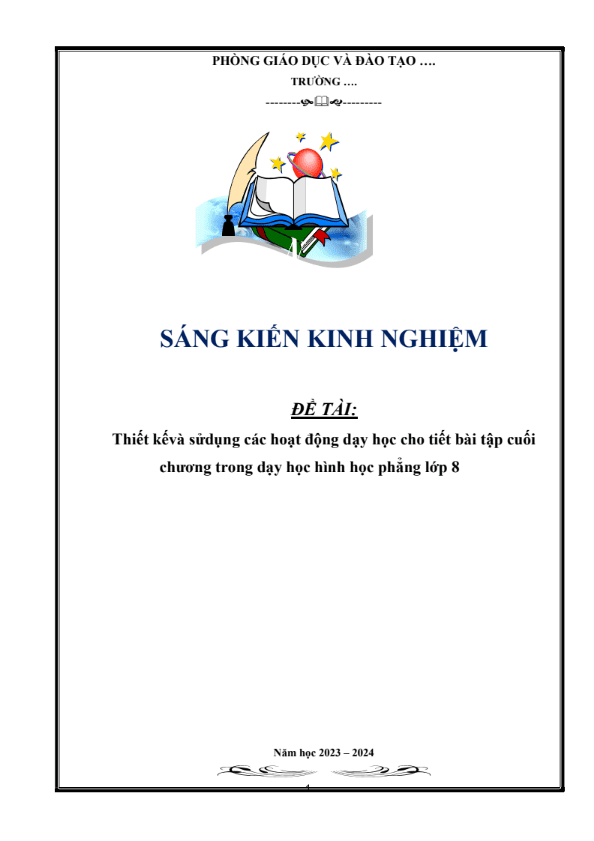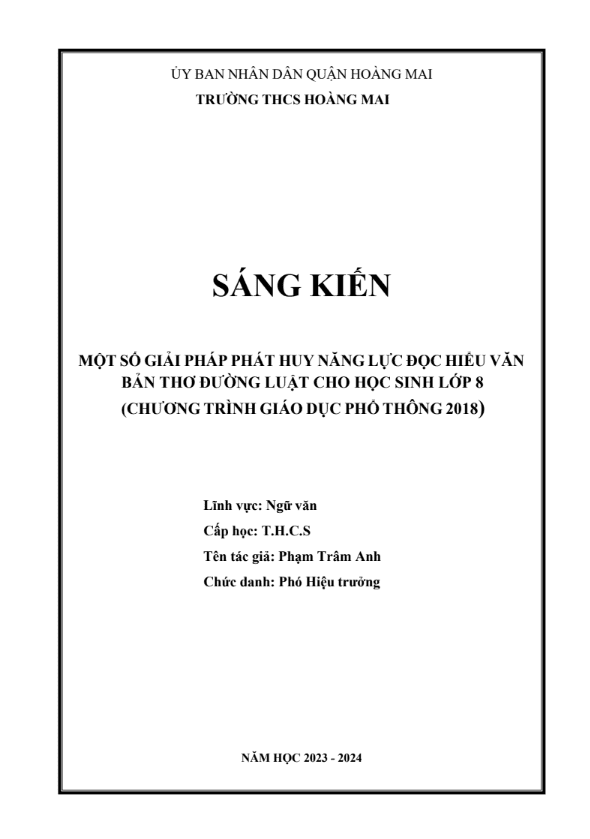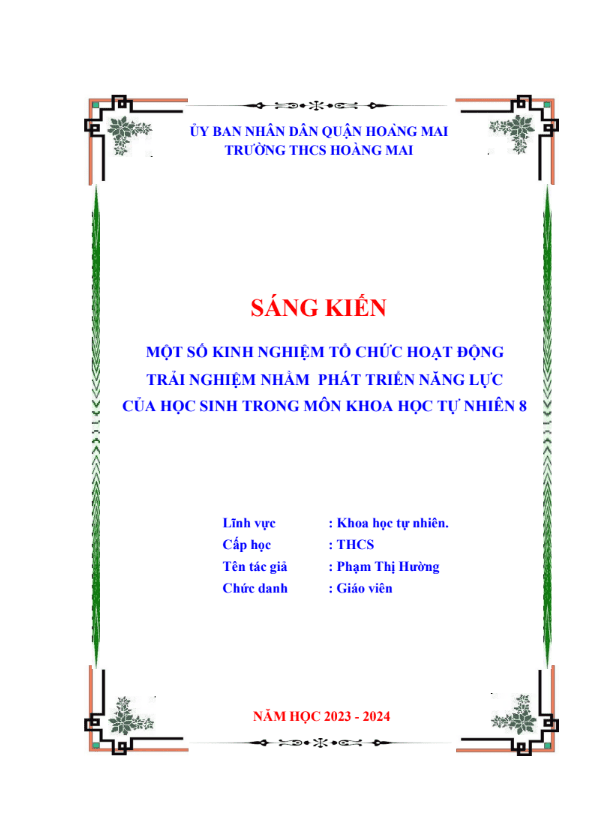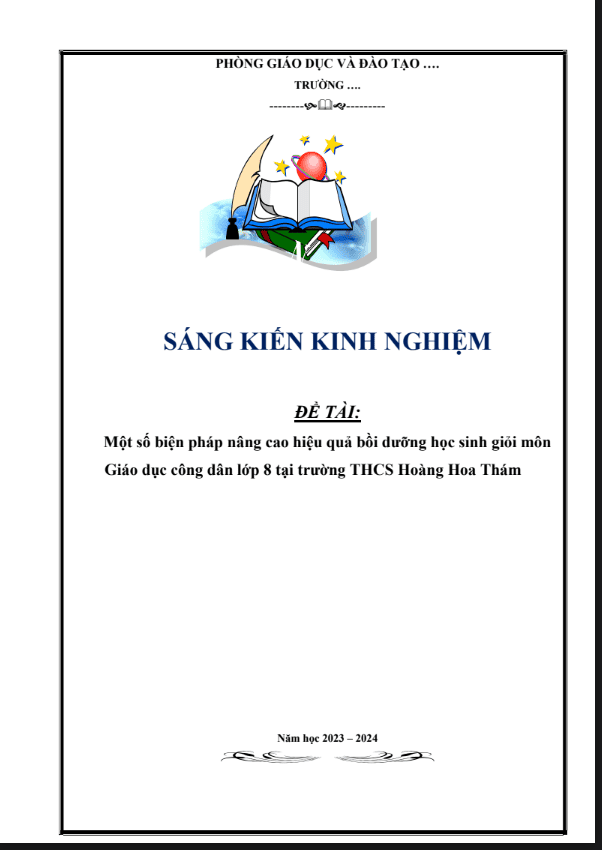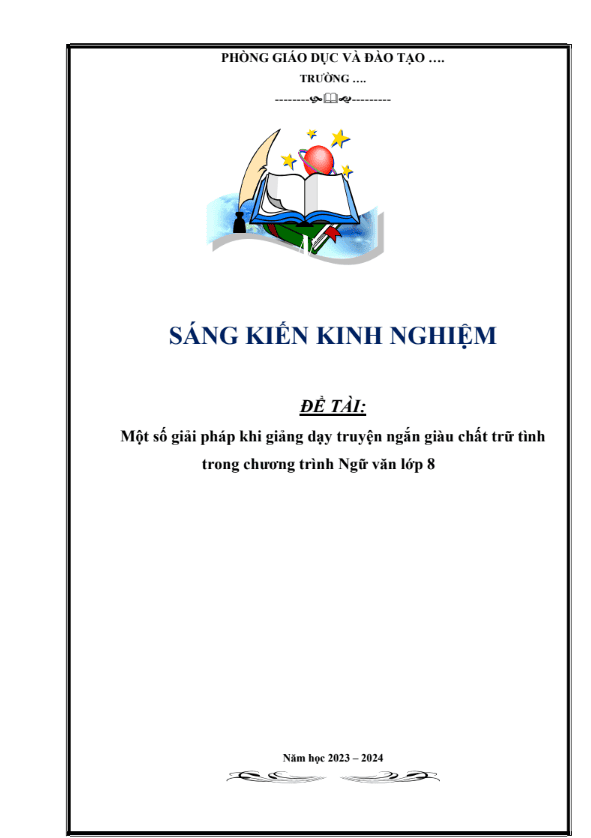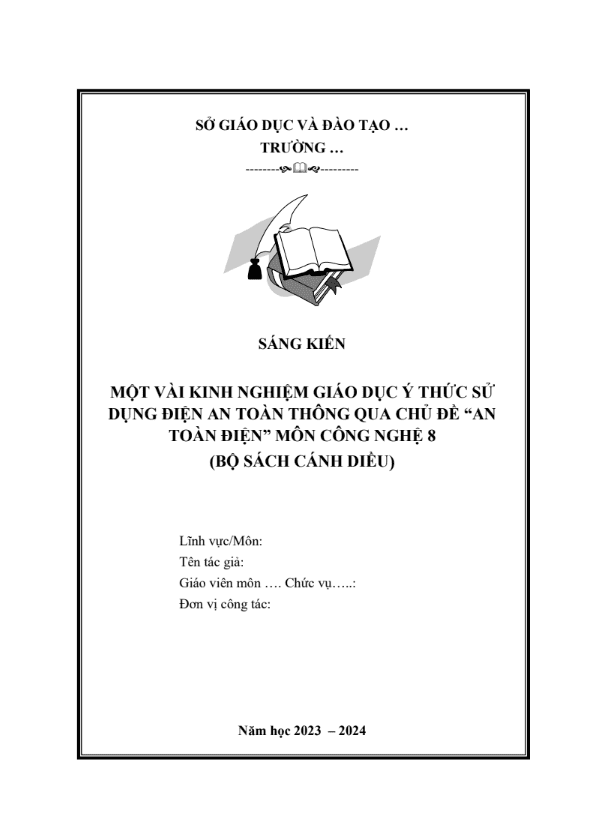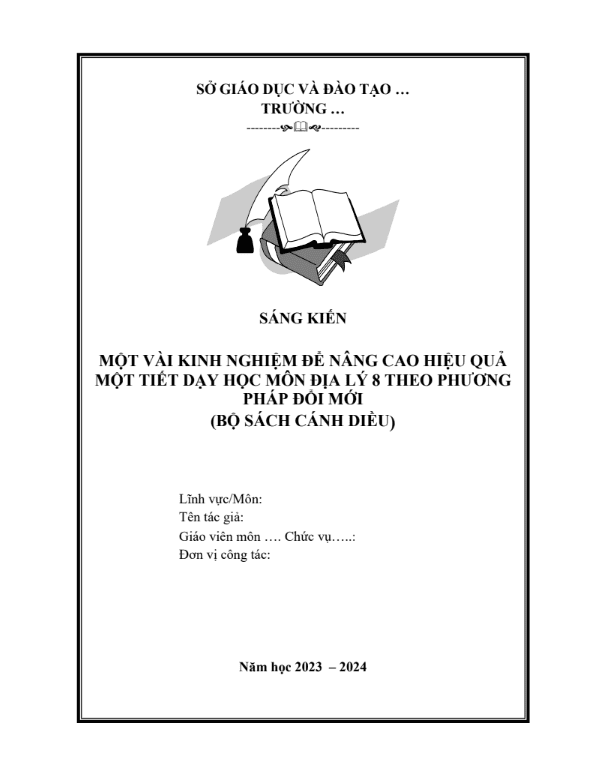SKKN Some techniques for teaching production in the listening lesson in English 9
- Mã tài liệu: BM9225 Copy
| Môn: | Tiếng anh |
| Lớp: | 9 |
| Bộ sách: | |
| Lượt xem: | 922 |
| Lượt tải: | 7 |
| Số trang: | 25 |
| Tác giả: | Nguyễn Thị Hồng Dung |
| Trình độ chuyên môn: | Thạc sĩ giáo dục |
| Đơn vị công tác: | THCS Nguyễn Thị Thập |
| Năm viết: | 2021-2022 |
| Số trang: | 25 |
| Tác giả: | Nguyễn Thị Hồng Dung |
| Trình độ chuyên môn: | Thạc sĩ giáo dục |
| Đơn vị công tác: | THCS Nguyễn Thị Thập |
| Năm viết: | 2021-2022 |
Sáng kiến kinh nghiệm “SKKN Some techniques for teaching production in the listening lesson in English 9” triển khai gồm các biện pháp nổi bật sau:
2.3.1. Understand the concept of teaching listening and reading skills
2.3.2. Research on listening activities
2.3.3. Conduct listening techniques
2.3.4. Organize different listening activities
2.3.5. Practice a variety of listening comprehension exercises: The listening comprehension exercises come in many forms
2.3.6. Understand some basic principles when conducting listening activities
2.3.7. Conduct multidimensional methods
2.3.8. Always apply question-and-answer tactics when teaching English listening skills
Mô tả sản phẩm
INDEX
Content Text
Some techniques for teaching production in the lesson “ Listen English 9
| Index | ||
| 1 | Preamble ………………………………………………………….. | |
| 1.1. | The reason for choosing the topic………………………………… | |
| 1.2. | Purpose of the study ……………………………………………… | |
| 1.3. | Research subects …………………………………………………. | |
| 1.4. | Reseach methods …………………………………………………. | |
| 2. | Content innovation experience …………………………………… | |
| 2.1. | Theoretical basis of the experience initiative ……………………. | |
| 2.2. | The real situation before applying the experience …………………. | |
| 2.3. | Measures to be solved to solve the problem ……………………… | |
| 2.3.1. | Understand the concept of teaching listening and reading skills … | |
| 2.3.2. | Research on listening activities ………………………………….. | |
| 2..3.3. | Conduct listening techniques ……………………………………. | |
| 2.3.4. | Organize different listening activities ……………………………. | |
| 2.3.5. | Practice a variety of listening comprehension exercises: The listening comprehension exercises come in many forms. The common exercises are ……………………………………………. | |
| 2.3.6. | Understand some basic principles when conducting listening activities ……………………………………………………. | |
| 2.3.7. | Conduct multidimensional methods ……………………….. | |
| 2.3.8. | Always apply question-and-answer tactics when teaching English listening skills …………………………………………………….. | |
| 2.4. | Effectiveness of experience injury ……………………………….. | |
| 3. | Conclusions ……………………………………………………… | |
- Preamble
1.1. The reason for choosing the topic
In the industrialization and modernization, english is an dispensable part of life and work as well. Needs of learning English to “use”, therefore, are becoming increasingly urgent. Nowadays teaching and learning English at secondary school has already changed a lot about the teaching contents as well as teaching the methods in order to suit with the aims of this subject in the reformed program. The basic opinion of new methods is to learn English for communication. So, our job is to provide our students with the basic skills they will need to practise the language fluently.
I have been teaching English at Nam Xuan Secondary School for several years, I found that students have a lot of difficulties in mastering the knowledge which the teacher has provided in the first lesson of each unit (Listen and Read). Because this is a presentation period, there are usually lots of vocabulary. So, most of teachers try to introduce vocabulary and grammar in the lesson , then ask students to do exercises in the book. The “production” part of this period asks teacher to invest more time and create by herself because it does not have in the book. Therefore this section sometimes teachers do not pay attention because I think I have communicated all the content of textbooks required. So apply the knowledge they have learned to reconstruct the language is limitted. And this is the problem which troubled me four. Stemming from reality and reason in the teaching process I refer to the book of expertise as well as consult eith my colleagues I found some stricks to apply in the Production of listen and read and details read English courses in Grade 9 and to some extent have obtained the relatively positive result, students have better vocabulary, after the lesson that they can communicate with you, can relate to actually to be able to present issues related to their own experience in English according to the theme of each. During teaching time, I recognized this problem and changed something with the hope of improving students’ learning. It leads me to a reason to choose a topic for this study “Some techniques for teaching production in the listening lesson in English 9”). I hope this innovation from my teaching experience can add something to enhancing learning and teaching English quality.
1.2. Purpose of the study
In order to innovate new language teaching methods, to avoid repetitive repetition, to create excitement for students during English lessons, they can learn while playing and at the same time inculcate the knowledge that I learn, master my knowledge, memorize and remember faster, use language proficiency in communication and enjoy learning English.
Helps teachers save time on language teaching, spending more time practicing.
1.3. Research subects
Subjects that I chose in this research topic is the pupils in grader 9 at Nam Xuan Junior High School
1.4. Reseach methods
Research Methods: Study the program, collect references related to listening skills, summarize some listening experiences, find out difficulties and problems in teaching and listening teachers. Educate students to find out how to overcome.
Observation methods: attendance, observation of peer tutoring and study of students in class to find out the most optimal solutions to improve the quality of teaching and learning English in the current junior high school.
Method of communication practice: how to organize classes through Listening skills
Comprehensive Approach: Understand the characteristics of students to see what they lack to achieve the ultimate goal, classify students’ English proficiency, break down their class by grade, and Allocate time and design lectures appropriately.
- Content innovation experience
2.1. Theoretical basis of the experience initiative
At present, with new awareness in teaching foreign languages, teaching English for communication purposes, expanding exchanges and cooperation with the world in all fields: domestic, foreign, cultural and commercial…. marked a major milestone: the gray matter investment in teaching and learning foreign languages, working in the direction of modern industry.
It is not easy to use fluently in a foreign language, but it is not difficult to study because, to a certain extent, learning a foreign language in general and learning English in particular is not the same thing. Something is too difficult if we have good methods and means, especially when we know how to combine the methods together and make good use of the means.
Innovative teaching now focuses on the creativity and creativity of students. Most of the time communication is when they think actively practice English. In order to have a good class they must prepare their homework. Moreover, to learn well one hour they need to hear a lot.
It is also because of the reasons mentioned above that the purpose of teaching and learning English is also a big change, it is not just “learning to learn” anymore, but learn to think, depth. We are not only aiming to achieve grammatical meanings but also to achieve and develop our language skills.
Understanding the nature of communication and being able to communicate when necessary is what we reach. LISTENING is considered to be a receptive skill, but it is often harder to read than listening because verbal cues that are heard are words that have very different characteristics than writing.
2.2. The real situation before applying the experience
TÀI LIỆU LIÊN QUAN
- 0
- 114
- 1
- [product_views]
- 2
- 163
- 2
- [product_views]
- 3
- 183
- 3
- [product_views]
- 0
- 124
- 4
- [product_views]
- 0
- 134
- 5
- [product_views]
- 0
- 109
- 6
- [product_views]
- 5
- 101
- 7
- [product_views]
- 7
- 117
- 8
- [product_views]
- 1
- 174
- 9
- [product_views]
- 8
- 179
- 10
- [product_views]

